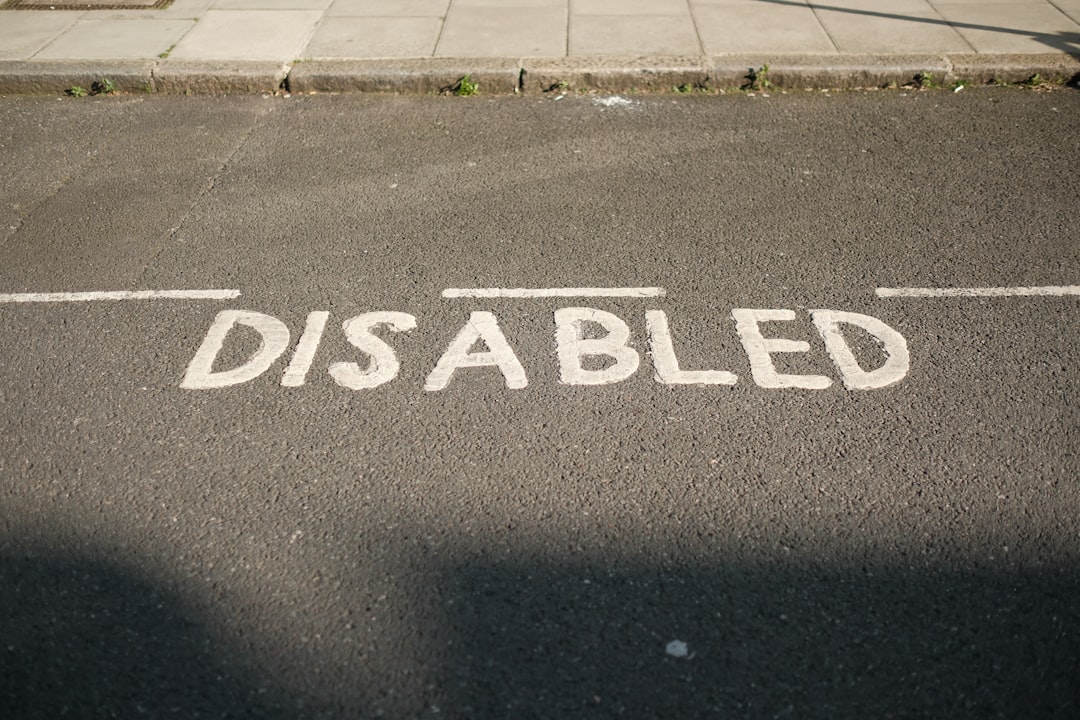

Engage prospects with a scan and streamline customer engagement with FREE QR code marketing tools by Sona – no strings attached!
Create a Free QR CodeFree consultation

No commitment

Engage prospects with a scan and streamline customer engagement with FREE QR code marketing tools by Sona – no strings attached!
Create a Free QR CodeFree consultation

No commitment
For disability insurance providers, bridging the gap between offline and online customer engagement poses unique challenges. Paper-driven forms, mailed survey cards, and manual communication processes still dominate daily operations. This reliance on analog workflows often leads to missed opportunities: essential feedback goes uncollected, and high-value customer insights never make it into digital systems, impeding both client experience and business development.
QR codes have emerged as a practical response to these persistent pain points. By connecting printed materials such as claims packets, policy documents, or in-branch displays directly to digital feedback channels, modern QR code solutions empower providers to transform every touchpoint into a source of real-time, actionable data. Policyholders and prospects can instantly access surveys, service updates, or educational resources without the friction of web searches or manual data entry, reducing the risk of incomplete or delayed responses. For survey-driven workflows, using Google Forms QR can streamline mobile feedback at scale.
This article explores how QR codes can address common roadblocks for disability insurance providers by streamlining feedback collection, closing visibility gaps on client engagement, and enabling more personalized, effective follow-ups. Whether the goal is to improve NPS, accelerate claims resolution, or refine products based on reliable signals, not just generic web analytics, QR code-driven strategies are redefining how industry leaders understand their customers and identify growth opportunities.

Disability insurers frequently grapple with untracked feedback and scattered engagement data. Traditional channels like mailed surveys or feedback forms left in waiting rooms are slow and often produce poor response rates, leaving a gap in client understanding and a backlog of incomplete data. These inefficiencies impact the ability to improve products or rapidly solve issues that matter most to policyholders. A manual process that relies on phone calls, long URLs, or return envelopes creates friction, which discourages timely participation and masks the real drivers of satisfaction or dissatisfaction.
Modern QR code workflows help companies sidestep these bottlenecks by enabling real-time, context-aware feedback collection. With a single scan, a client can complete a short survey tailored to their situation, request help, or access a relevant explainer. Each scan can be tracked, analyzed, and connected to a specific journey stage, such as post-claim, renewal, or onboarding. By integrating QR-driven data with CRM and analytics tools, providers can unify signals that once lived in spreadsheets and filing cabinets and turn them into measurable improvements across the business. For CRM activation, see Sona’s HubSpot guide.
By modernizing analog touchpoints and integrating resulting data directly with CRM or analytics platforms, providers gain a unified, actionable view of client interactions. This reduces lost opportunity costs, accelerates issue resolution, and sets the stage for targeted service improvements that clients notice and appreciate.

One of the most persistent frustrations for disability insurance organizations is the lack of visibility into who is actually engaging and how across the many touchpoints that define the customer journey. Policyholder feedback often goes missing in action, while applicants fall off the radar after initial inquiries and engagement data stays siloed, causing missed upsell or cross-sell opportunities. Static print communication cannot capture intent or urgency, and the delay between a mailed survey and a returned response breaks the feedback loop.
QR codes provide the connective tissue that turns passive print assets into interactive channels. They reduce friction by making digital actions one scan away, and they enable continuous iteration since destinations can be changed without reprinting. When paired with a tracking platform, each scan delivers context, from time and location to device and campaign, which supports smarter staffing, better messaging, and timely follow-ups. For disability insurers, this creates a measurable path from offline engagement to improved claims satisfaction and retention—see our insurance industry guide.
For instance, adding dynamic QR codes to post-claim letters helps identify at-risk clients earlier by detecting negative sentiment within days rather than weeks. Similarly, QR codes on policy comparison brochures can reveal when and where prospective clients show intent, enabling timely guidance from an agent or an automated educational sequence.

A typical challenge in disability insurance is the reliance on disconnected feedback formats: paper forms, separate email campaigns, and ad hoc data collection. This produces incomplete or outdated profiles that slow decision-making and obscure insights. QR code formats provide a standardized way to centralize and streamline collection at the point of engagement, and they map cleanly to the most common workflows in insurance.
Choosing the right QR format is essential for delivering a smooth experience. Whether the goal is to capture detailed forms, trigger a pre-filled email, or simplify agent handoffs, there is a format to match. Dynamic QR codes add flexibility because destinations can change as programs iterate, which saves time and printing costs while ensuring content remains relevant.
By standardizing on these digital-first formats, insurance providers can move beyond generic, one-size-fits-all engagement. They can recognize repeat policyholders, identify high-potential leads, and improve segmentation for targeted outreach across the client lifecycle.

A significant barrier to growth in disability insurance is the slow transition from offline to online interaction. The industry depends on paper-heavy communication that often fails to convert interest into measurable action. Unstructured and fragmented data weakens confidence in prioritization, which leads to diluted marketing efforts and slower service improvements.
Embedding QR codes where offline and digital journeys overlap helps unlock immediate and long-term value. Each placement captures the moment of intent and channels it into structured data. By analyzing scan patterns and outcomes, providers can learn which print materials and moments consistently spark engagement and which need reworking.
By analyzing participation and engagement across these placements, providers can refine their feedback strategy and uncover which offline touchpoints deliver the strongest digital conversions. Over time, this helps redirect budget toward placements that consistently generate value.
Historically, disability insurance feedback and communication processes have been fractured by manual handoffs and disconnected data sources. Insights arrive late, if at all, and they often lack context. QR codes streamline several core use cases that impact both day-to-day satisfaction and long-term retention, while producing data fit for analysis and decision-making.
The highest-impact use cases tend to be those closest to the most emotional or time-sensitive interactions, such as claims resolution and eligibility assessments. When barriers to engagement are removed, clients respond more quickly and comprehensively, which helps teams act with confidence.
By folding these use cases into daily workflows, providers replace error-prone manual methods and ensure that no high-value insight is lost due to fragmented data. Each scan becomes a datapoint that informs better service and smarter follow-up.
Many insurers still struggle to unify account-level data, which makes audience segmentation and retargeting difficult. When engagement is anonymous or stuck outside the CRM, budget is wasted on broad campaigns with little impact. QR-enabled feedback strategies create a way to capture behavioral context at the moment it happens and feed it into the tools that drive action. To connect scans to identities, explore account identification.
By assigning unique QR codes to specific journey stages and use cases, providers can auto-tag audiences by interest and urgency. This supports tailored messaging through email, SMS, or paid retargeting, and it connects offline interactions to the digital funnel with clear attribution—see Sona’s retargeting playbook.
Altogether, this approach helps build intent-driven audiences that reflect real behavior. Teams can then craft communications that resonate with each segment’s needs rather than sending generic messages that underperform.
Fragmented communication is a frequent complaint among disability insurance clients. Policy information, claims assistance, and feedback requests often travel separate paths, which causes confusion and undermines trust. QR codes help unify these experiences by creating a consistent bridge between offline prompts and online resources.
In practice, QR codes enhance attribution and improve customer experience across the entire marketing mix. When placements are coordinated and linked to a structured follow-up plan, providers can minimize redundancy and keep each interaction focused on a clear next step.
By embedding QR codes at offline-to-online bridges, providers create a more consistent customer experience and build the high-fidelity data needed for continuous improvement. The result is a marketing engine that learns which touchpoints truly drive progress.
To maximize the impact of QR initiatives in an environment that often relies on legacy systems, disability insurance teams should adopt a staged approach. Each step builds the foundation for accurate attribution, smooth user experience, and measurable business outcomes. The following steps reflect best practices drawn from digital transformation programs in regulated, paper-heavy industries.
Clarify the business goal before generating a single QR code. Decide whether the campaign is designed to gather feedback, qualify leads, educate policyholders, or support retention. Example goals include boosting post-claim survey completion, collecting renewal readiness signals, or driving appointments during open enrollment windows.
The most successful programs limit initial scope to one or two high-impact moments, such as post-claim follow-up or onboarding. Once the team proves value with these use cases, expansion to other touchpoints becomes straightforward.
Select the QR code format and whether it should be static or dynamic. Static codes work for fixed information such as a PDF guide. Dynamic codes are best for campaigns that need tracking, easy updates, or segmentation by audience and placement.
In disability insurance, dynamic QR codes are usually the smarter choice since regulations, messaging, and resources change over time. They also simplify A/B tests and let you update surveys without reprinting.
Design the code to match brand standards and the environment where it will be scanned. Include a clear call to action, a short benefit statement, and enough white space to ensure clean scanning. Test codes at various sizes and angles in realistic conditions to avoid failed scans that undermine trust.
Testing should include accessibility and language considerations, especially for clients managing disabilities or working through stressful claims experiences. Aim for simplicity and clarity, and ensure the destination content is fully mobile optimized. Explore accessible QR codes to improve inclusion.
Roll out codes in placements that intersect with priority journey stages. Claims packets, settlement letters, renewal reminders, and agent mailers are high-value starting points. Use unique codes per channel and location to learn which deployments generate the strongest engagement.
Consider deploying small pilots in a few regions or offices before scaling broadly. Early learnings will inform CTA phrasing, creative layout, and landing page structure, which improves performance once you expand.
Instrument analytics to capture scans, conversions, and drop-off points. With platforms like Sona QR, you can monitor performance by device, region, time, and campaign, then adjust quickly. Connect scan data to CRM records so that teams can take timely action based on actual behavior. For strategy and ideas, see our QR marketing guide.
Optimization should be continuous. Experiment with different CTAs, move underperforming placements, and refine surveys based on feedback quality. Treat each QR as a miniature marketing channel, not a static link.
Without a unified approach to engagement tracking, feedback from multiple channels can end up siloed or orphaned. This limits visibility into what drives retention, claims resolution speed, or cross-sell potential. Disability insurance teams need to connect each scan with a clear journey step and a business outcome, which turns engagement into a foundation for decision-making.
An end-to-end analytics framework should attribute scans to individuals when possible, protect privacy, and integrate with existing systems. The goal is to know how an offline prompt influenced digital actions and results, such as shorter claim cycles or higher renewal rates. Tools like Sona QR and Sona make it possible to move beyond raw scan counts and into revenue-level attribution.
A robust tracking strategy ensures that every scan improves immediate client satisfaction and enables smarter long-term planning. Over time, analytics will highlight which QR initiatives contribute most to revenue and retention, guiding budget allocation and program design.
Scaling QR programs requires operational discipline and creativity. Teams should standardize how codes are created, tagged, and measured, while also exploring new placements that capture feedback at underutilized touchpoints. This ensures the program grows efficiently and continues to surface insights that move the needle.
Education matters as much as execution. Agents, brokers, and support staff need simple scripts and materials to explain why scanning helps clients. Policyholders will participate when they understand the benefit, such as faster support or simpler renewals, and when landing pages are designed for single, clear actions. For front-line enablement, see these broker QR tips.
Iterating based on this data-driven engine uncovers blind spots and strengthens both retention and new business pipelines. Creative placements like QR codes on invoices for renewal confirmations or on appointment reminders for pre-visit questionnaires can convert routine communications into valuable insight sources.

Industry leaders have already shown how QR code innovation can generate outsized impact. What separates strong programs from one-off experiments is the commitment to connect every scan to a workflow, a follow-up, and a measurable outcome. When teams test placements and refine the post-scan experience, results compound.
The following examples illustrate how small shifts in communication can produce significant improvements. They also show how QR data informs future decisions, such as where to focus service redesign or which audiences are ready for tailored recommendations.
These examples underscore how combining everyday touchpoints with QR feedback captures vital signals and closes data gaps across the insurance workflow. The key is to pair each scan with a clear next step and a path to analysis.
Even strong QR code campaigns can stumble without attention to the details. In a sector shaped by compliance requirements and legacy processes, success depends on both technical execution and consistent communication with stakeholders. Avoiding the most common pitfalls can save time and protect customer trust.
The most frequent issues include poor scannability, confusing post-scan journeys, and lack of follow-through. Make the call to action explicit, keep landing pages focused, and ensure every scan triggers a defined process such as an automated response or a CRM task for the right team.
Through consistent communication, diligent testing, and a focus on demonstrating value, QR code campaigns evolve from small pilots into pillars of an insight-driven business strategy. The result is a measurable increase in satisfaction and operational efficiency.
QR codes have rapidly become a catalyst for modernizing feedback collection among disability insurance providers, resolving long-standing issues around incomplete data, slow client communication, and visibility gaps in account engagement. Each scan delivers more than a data point, it surfaces actionable insights that drive improvements to claims processes, product offerings, and policyholder retention.
By embedding QR codes throughout critical client touchpoints and synchronizing data with CRM and analytics solutions, disability insurers can unify fragmented engagement signals, identify and act on high-value opportunities, and convert paper-heavy workflows into efficient, data-informed pipelines. This approach transforms feedback from a sporadic afterthought into a continuous, measurable source of value.
In a sector where trust and rapid adaptability are paramount, QR code-driven feedback collection is a key enabler for delivering more responsive, transparent, and personalized service. Providers ready to leverage these innovations are well-positioned to deepen relationships, improve business results, and stay ahead of emerging industry challenges. Platforms like Sona QR and Sona support this transformation by turning real-world engagement into connected journeys and revenue-level insights, so teams can see which offline prompts lead to meaningful outcomes and scale what works. Start creating QR codes for free.
QR codes have transformed disability insurance providers from traditional feedback methods into dynamic, real-time engagement tools. Whether it’s streamlining customer feedback collection, enhancing client experiences, or identifying service improvement opportunities, QR codes replace cumbersome surveys with instant, mobile-friendly access to valuable insights. Imagine knowing exactly which communication channels encourage policyholders to share their feedback—and being able to act on that information immediately.
With Sona QR, you can create dynamic, trackable QR codes in seconds, update feedback campaigns instantly without reprinting materials, and connect every scan directly to actionable data that drives better service and client loyalty. No missed feedback, no guesswork—just smarter, more responsive disability insurance solutions. Start for free with Sona QR today and turn every scan into meaningful conversations that elevate your customer experience.
Disability insurance providers often rely on paper forms, mailed surveys, and manual communication, leading to missed feedback, fragmented data, and slow client communication that hinder business development.
QR codes connect printed materials to digital feedback channels, enabling real-time, context-aware surveys and resource access, which increases response rates and integrates data directly with CRM and analytics systems.
Common QR code formats include web links for surveys and FAQs, forms for data capture, SMS or email triggers for quick updates, vCards for contact sharing, and dynamic codes for flexible content updates.
QR codes should be embedded in claims packets, policy documents, agent materials, renewal reminders, event signage, and waiting areas to capture feedback and client intent at high-value touchpoints.
Integrating QR scan data with CRM systems allows providers to unify engagement signals, trigger timely follow-ups, assign tasks, and create personalized retargeting campaigns based on client behavior.
Teams should choose a clear use case, select appropriate QR code types, design and test codes for accessibility and scannability, deploy codes across priority channels, and continuously track and optimize performance.
Dynamic QR codes allow updating destinations without reprinting, support tracking and segmentation, enable A/B testing, and help maintain compliance and relevance as policies and messaging evolve.
By assigning unique QR codes per journey stage and use case, providers capture behavioral context and tag audiences by interest and urgency, enabling personalized messaging and precise digital retargeting.
Common pitfalls include poor scannability due to design or placement, confusing post-scan experiences with multiple choices, lack of privacy communication, and failure to close the feedback loop with clients.
Examples include tripling survey response rates after claims, capturing qualified leads through policy comparison brochures, improving renewal feedback and recommendations, and facilitating faster agent follow-ups with vCard QR codes.
Use Sona QR's trackable codes to improve customer acquisition and engagement today.
Create Your FREE Trackable QR Code in SecondsJoin results-focused teams combining Sona Platform automation with advanced Google Ads strategies to scale lead generation

Connect your existing CRM

Free Account Enrichment

No setup fees
No commitment required

Free consultation

Get a custom Google Ads roadmap for your business






Launch campaigns that generate qualified leads in 30 days or less.
